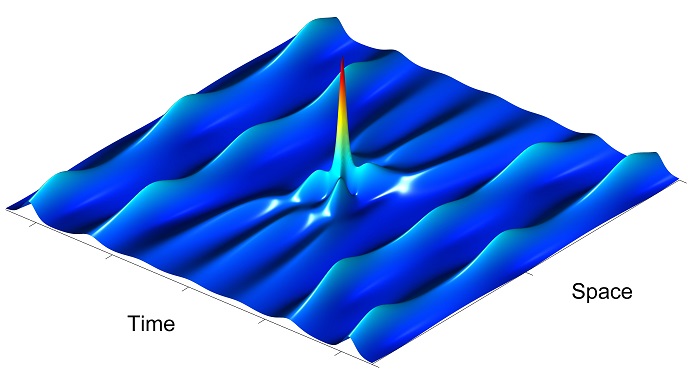29 September 2014
University of Auckland physicist Dr Miro Erkintalo is part of an international team investigating how lasers and optical fibres can be used to understand freakishly large waves on the ocean.
Rogue waves are unusually large waves that form at sea without warning but which can have great destructive power. They were once thought to be folklore but in recent decades, with improved technologies, scientists have been able to prove they exist through direct observations. These freak waves are considered threats to ships and have been suggested as the cause of a number of maritime disasters.
Rogue waves are of interest to optical physicists because laser light can behave very similarly to waves at sea. Under certain conditions, the mathematical models that describe light and ocean waves are the same.
In these conditions optical ‘instabilities’ can be seen as ‘optical rogue waves’ that are comparable to their counterparts at sea. The difference between the two forms of wave instability is that one can be conveniently studied in a laboratory and the other cannot.
“Rogue waves are so rare that examining them at sea is next to impossible”, says Dr Miro Erkintalo of the University of Auckland’s Department of Physics.
“Luckily we can study them using analogous optical laboratory experiments that are designed to mimic the behaviour of ocean waves. Optical fibre systems are particularly suitable for this purpose.
“This work is now being done to the extent where scale models of maritime vessels are being used to see how they cope with ‘synthesised’ rogue waves.”
In a Review article that appears in the prestigious journal Nature Photonics, Dr Erkintalo and international collaborators present an overview of the field, summarising major advances and clarifying the underlying physics.
“Optical systems offer a convenient test-bed that permits ultrafast measurements in controlled conditions. The dream is that experiments in optics could eventually provide sufficient insights into the mechanisms of rogue waves so that we would be able to predict them.
“This is still a very long way away, but experiments in optics are providing new insights into the mechanisms that lead to giant waves on the ocean”
The work published in Nature Photonics was done by Professor John M. Dudley (University of Franche-Comte, France), Professor Frédéric Dias (University College Dublin, Ireland), Dr Miro Erkintalo and Professor Goëry Genty (Tampere University of Technology, Finland).












